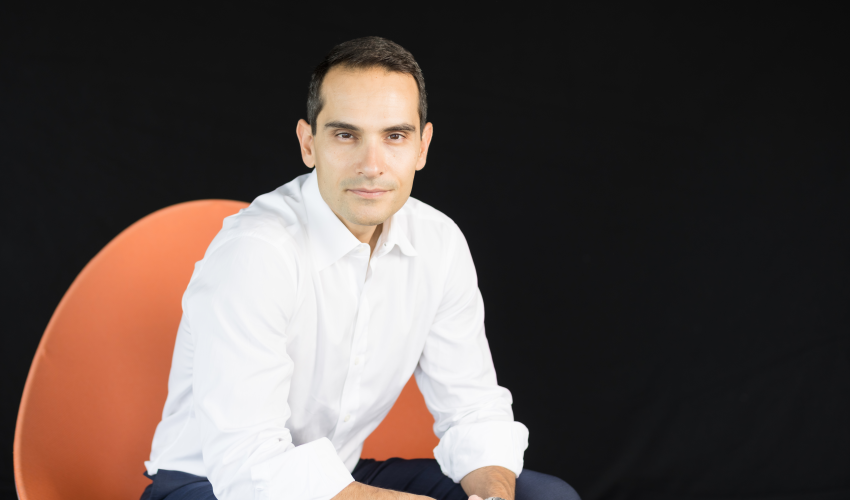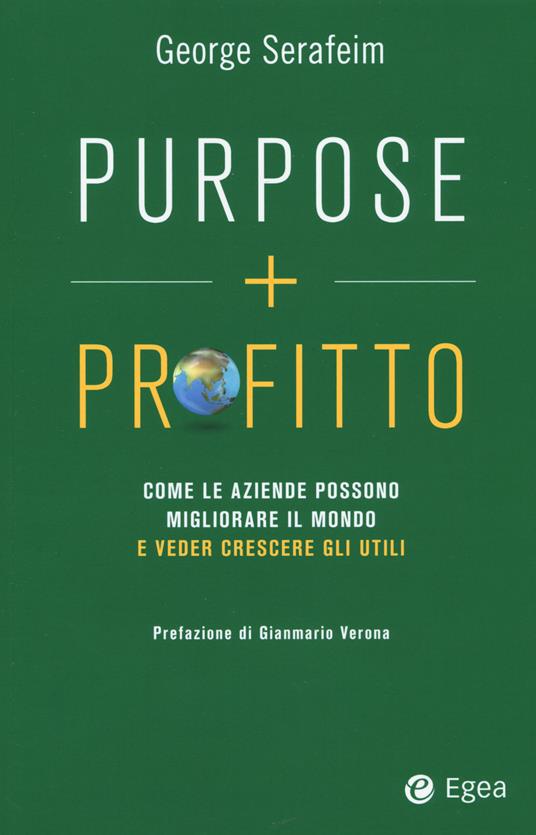
If purpose goes hand in hand with profit
GEORGE SERAFEIM, CHARLES M. WILLIAMS PROFESSOR OF BUSINESS ADMINISTRATION AT HARVARD BUSINESS SCHOOL, EXPLAINS HOW AND WHY, WHEN COMPANIES LOOK AT THEIR IMPACT ON THE WORLD AS WELL AS THEIR EARNINGS, THEY DO BETTER THAN COMPETITORS IN THE LONG RUNThere is a much greater chance of achieving bold goals than modest goals if a company combines purpose and profit. This could be the umpteenth enthusiastic thesis about the company's choice not to achieve only profit but also, at the same time, a wider objective, more social or greener. The real problem is to understand what purpose to be pursued and how. So, this is why George Serafeim, Charles M. Williams Professor of Business Administration at Harvard Business School, where he co-leads the "Impact-Weighted Accounts Project and the Climate and Sustainability Impact AI Lab", wrote the book Purpose + Profit: How Business Can Lift Up the World (Purpose + Profitto: come le imprese possono migliorare il mondo e veder crescere gli utili, Egea, 2022), a publication supported by more than 50 scientific articles and field studies from the last past ten years and a lot of business examples. Cases of success and failure, ranging from Unilever to NRG Energy, from Solvay to Novartis, without forgetting Nike’s case about human rights. Firstly, Serafeim argues scientifically that combining purpose and profit can be extremely rewarding, then he describes the concrete steps a company can follow to become purpose-oriented, the main models it can be inspired by and how to measure every improvement. It doesn’t matter if an organization wants to provide cheaper food to poorer people or prefers ensuring better transportation bringing people closer, “realizing the own purpose is not easy and there are no guarantees to success”, warns the first associate professor to obtain a funded professorship, one of the youngest to lead an executive education program and to become a full professor at Harvard Business School. “But a company can significantly grow if it becomes clear what purpose can innovate her and its market. Purpose-driven organizations and organizations that improve their performance on strategically relevant ESG issues outperform their competitors in the long-term”.
 Serafeim, who currently teaches both the course "Risks, Opportunities and Investments in an Era of Climate Change" (he designed for the elective curriculum of the MBA program) and the course "Financial Reporting and Control" in the required MBA curriculum, doesn’t fail to suggest his model Impact-Weighted Accounts, that translates everything a company does into monetary terms and allows to calculate the earnings after taking into account the company’s overall impact on the environment, customers, employees. “Compared to the past, we have much more data and metrics to analyze corporate ESG efforts. However, if non-financial metrics are also included in the financial statements, these last ones will identify truly profitable companies”, Serafeim adds. “Impact-Weighted Accounts can be the system useful to begin to establish a common analysis methodology. The starting point is to have relevant and trustworthy information that originates comparable indications to assess whether one company is more or less innovative than another”.
Serafeim, who currently teaches both the course "Risks, Opportunities and Investments in an Era of Climate Change" (he designed for the elective curriculum of the MBA program) and the course "Financial Reporting and Control" in the required MBA curriculum, doesn’t fail to suggest his model Impact-Weighted Accounts, that translates everything a company does into monetary terms and allows to calculate the earnings after taking into account the company’s overall impact on the environment, customers, employees. “Compared to the past, we have much more data and metrics to analyze corporate ESG efforts. However, if non-financial metrics are also included in the financial statements, these last ones will identify truly profitable companies”, Serafeim adds. “Impact-Weighted Accounts can be the system useful to begin to establish a common analysis methodology. The starting point is to have relevant and trustworthy information that originates comparable indications to assess whether one company is more or less innovative than another”.How can a company choose the right purpose, one that gives it a competitive advantage? Watching Made in Italy’s case, sectors like fashion have enough investors and funds to support it in an ESG transition. Nonetheless, they haven’t moved towards sustainability. What trigger do they need?
Every company is created with a strong sense of purpose, what a company wants to achieve. But, as it grows and becomes more complex, the sight of purpose is less and less clear. Heritage can be useful to find again the importance of my core product or service and to update it in the future. The world is full of problems to be solved but a company could discover its purpose in the main field where the company can improve itself. Speaking about fashion, this is a sector that, firstly, could take stock to activate the transformation, identifying and defining the most relevant challenges. Often, the further step is to create a common consensus around these objectives, inside the company and outside in its sector, to determine a common value chain for the industry. To go beyond, a national plan must be built with short-term goals, so as not to demotivate people. When nothing happens for years, people cannot understand how this strategy can produce concrete results. Once the path has been planned and the first goals have been achieved, then it is time to demonstrate, to communicate that this project is also scalable.
Sometimes, the aim is to reduce CO2 emissions and the trigger is the opportunity to save the planet…
Yes, this is true but the question is if getting operating efficiency is the chance to go forward or not. Fewer companies move forward in a growth and innovation perspective. If they do, that becomes the time to ask themselves what’s their broader purpose. It’s interesting to note that, when faced with a similar starting situation, two companies may choose two different purposes. In the case of clothing, for instance, both companies want to reduce their impact but one may decide to produce by polluting less and less and the other one can extend the life cycle of a product, thus creating a second-hand market. Anyway, limiting themselves to cost-cutting is a huge missed opportunity, because it does not allow them to reach the other archetypes mentioned in the book, which are the other 5 paths that most companies follow to evolve. Each archetype has its degree of success and its risk of failure, with different levels of potential disruption. In general, some are designed more for start-ups, some for more established companies and others are good for both categories.
…and could a company's purpose only be to sell more?
Just selling more is not a great motivation. If anything, better to ask yourself what you want to sell and why. It could be the opportunity to sell more and solve at the same time a problem in that market, for example, by making up for a lack of health care infrastructure. The risk is you end up just pushing your products without making the need you want to satisfy clear. Only by understanding both points company managers can find new business solutions, which push the selling into a virtuous circle along with the purpose.
How do you comment on the news of Twitter's acquisition and the displeased reactions by investors and users?
In the beginning, the purpose of Twitter was to give people a voice and thus unite them. Since misinformation, fake news and divisions prevailed, the social network hasn’t been performing on ESG goals and also not performing well financially. Now, after the acquisition, Elon Musk has given his clear vision for the social network. He proved in the past that he knows how to build innovative and performing companies such as SpaceX and Tesla. Will he be successful this time as well? I don't know but I know that the challenge is to create a more accountable social network, eliminating fake accounts for instance. If Musk succeeds, Twitter will grow.
What could be the opportunity for investors in what is still an underdeveloped sustainability market?
For now, 90% of the main companies accounts their global impact and the percentage was only 20% ten years ago. In addition, as I said before, organizations led by a purpose or focused on improving their performance of industry-critical ESG goals outperform their competitors over the long-term. In detail, investors can be very attracted by ESG undetected potential, looking for companies that express themselves but they are still unknown or, in a better scenario, those that didn’t maximise their potential. The opportunity is to be in on it before the enterprise value soars. In the end, and in confirmation of accounting relevance, the framework of investing is again measuring and comparative analysis.
THE BOOK
Written for managers pursuing social and environmental objectives and for those who want to understand concretely how to activate socio-economic improvement beyond corporate slogans and market trends, George Serafeim’s Purpose + Profit: How Business Can Lift Up the World (Purpose + Profitto: come le imprese possono migliorare il mondo e veder crescere gli utili, Egea, 2022, 216 pages, €29) includes more than 50 scientific articles and field studies over the last ten years and a lot of case histories about how to pursue ESG objectives while increasing the business. The Harvard Business School Professor measures and compares various company initiatives and their impact on turnover and in terms of wider social and environmental effects.
by Camillo Papini
